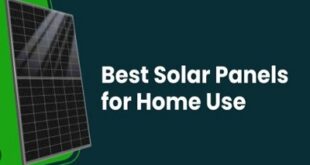The Solar Revolution Hits Home in 2025
Solar energy isn’t just a trend—it’s a revolution transforming how we power our homes. By 2025, advancements in solar panel technology have made it easier, cheaper, and more efficient than ever to harness the sun’s power. Whether you’re looking to slash your utility bills, boost your home’s value, or live more sustainably, the best solar panels for home use in 2025 are here to deliver. But with rapid innovations and a flood of options, choosing the right system can feel overwhelming.
This guide dives deep into the top solar panels for 2025, spotlighting cutting-edge features, installation insights, and tips to maximize your investment. From high-tech panels to practical homeowner advice, we’ve got you covered. Ready to power your home with the sun? Let’s explore what 2025 has in store!
Why Solar Panels Are a Must-Have in 2025
The case for solar has never been stronger. Electricity prices are climbing—up 6% annually in some regions—while solar costs have dropped 20% since 2020, thanks to improved manufacturing and competition. Add in tax credits (like the U.S.’s 30% federal incentive) and rising eco-awareness, and 2025 is the sweet spot for going solar. The best solar panels for home use today combine efficiency, affordability, and durability—making them a no-brainer for modern homeowners.
Key Features of Top Solar Panels in 2025
What sets the best panels apart? Here’s what to prioritize:
- Efficiency Gains: Panels now exceed 22%, squeezing more power from every ray of sunlight.
- Smart Tech: Built-in microinverters and monitoring apps optimize performance.
- Durability Upgrades: Weather-resistant designs handle heatwaves, hail, and hurricanes.
- Cost Efficiency: Lower prices per watt mean faster payback periods.
- Eco-Friendliness: Sustainable materials reduce the environmental footprint.
Top 5 Solar Panels for Homes in 2025
1. LG NeON H+ Black
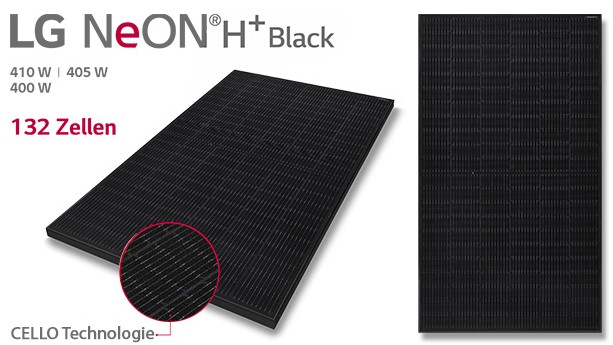
Efficiency: Up to 22.5%
Power Output: 420-450 watts
Warranty: 25-year product and performance (0.33% degradation)
Cost: ~$2.90-$3.10 per watt
LG’s NeON H+ Black brings premium performance to 2025 with its N-type cell technology, boosting efficiency and low-light output. Its sleek black-on-black design is a aesthetic win, while the lightweight frame simplifies installation. LG’s exit from the solar market in 2022 means remaining stock is still circulating with strong warranties intact.
Who It’s For: Homeowners who want a stylish, high-performing panel before supplies dwindle.
Pros: Excellent efficiency, elegant look, reliable brand legacy.
Cons: Limited availability as LG phases out.
2. Panasonic EverVolt HK2 Black Series
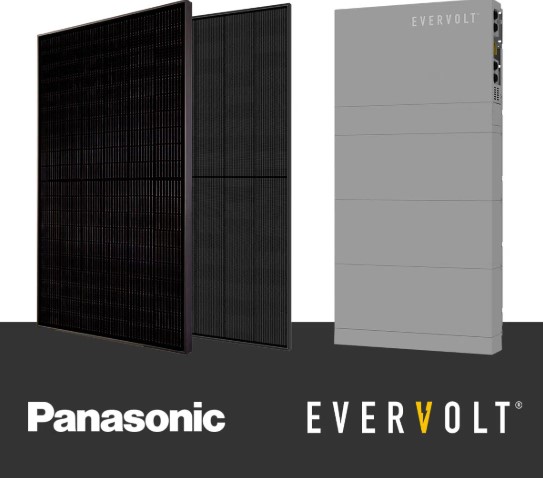
Efficiency: Up to 22.2%
Power Output: 400-430 watts
Warranty: 25-year all-inclusive (0.26% degradation)
Cost: ~$2.85-$3.00 per watt
Panasonic’s EverVolt HK2 combines heterojunction tech with a slim, all-black profile. It’s built for extreme climates—resisting heat and humidity—and includes a rare triple warranty covering product, performance, and labor. Integrated microinverters make it a smart, future-proof choice.
Who It’s For: Tech-savvy homeowners in tough weather zones.
Pros: Top-tier warranty, smart features, heat resistance.
Cons: Slightly higher cost than budget options.
3. Canadian Solar HiHero
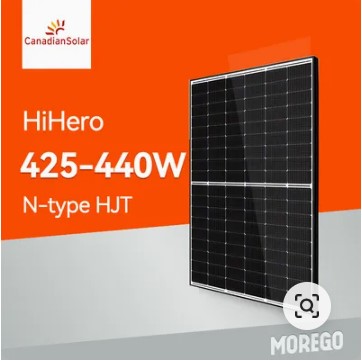
Efficiency: Up to 22.8%
Power Output: 440-460 watts
Warranty: 25-year performance (0.5% degradation)
Cost: ~$2.45-$2.65 per watt
Canadian Solar’s HiHero leverages TOPCon cells for exceptional efficiency at a wallet-friendly price. Its robust frame withstands wind and snow loads, and a low degradation rate ensures decades of output. Widely available, it’s a practical pick for mass adoption.
Who It’s For: Value-driven homeowners needing high power.
Pros: Affordable, durable, great efficiency.
Cons: Less premium design than competitors.
4. Trina Solar Vertex S+
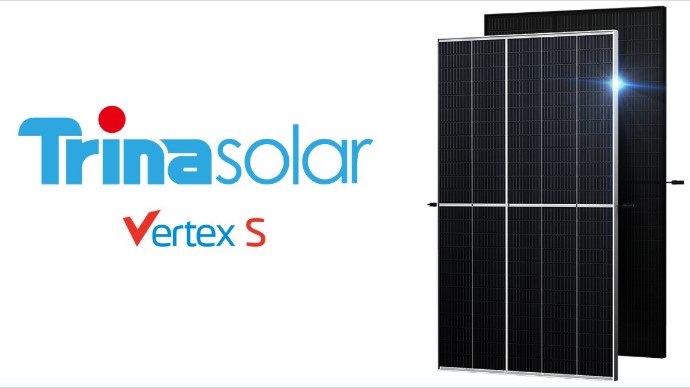
Efficiency: Up to 21.9%
Power Output: 405-435 watts
Warranty: 25-year product, 30-year performance (0.4% degradation)
Cost: ~$2.50-$2.70 per watt
Trina’s Vertex S+ is a compact powerhouse, perfect for smaller roofs. Its multi-busbar design boosts energy capture, and a 30-year performance warranty signals longevity. Made with recyclable materials, it’s a green choice for eco-conscious buyers.
Who It’s For: Small-home owners who prioritize sustainability.
Pros: Compact size, eco-friendly, long warranty.
Cons: Slightly lower efficiency than top-tier rivals.
5. Longi Hi-MO 6 Explorer
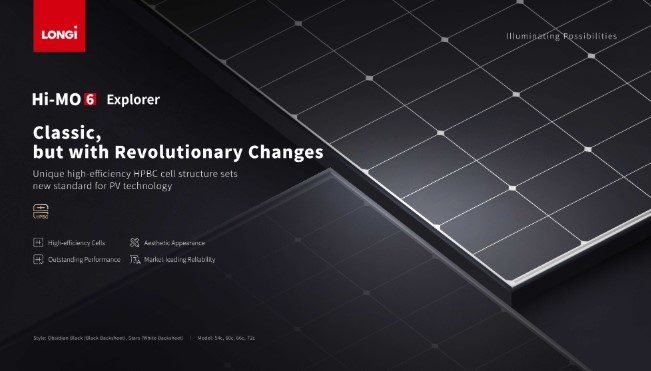
Efficiency: Up to 22.6%
Power Output: 430-460 watts
Warranty: 25-year performance (0.45% degradation)
Cost: ~$2.40-$2.60 per watt
Longi’s Hi-MO 6 Explorer uses HPBC (Hybrid Passivated Back Contact) tech for high efficiency and sleek aesthetics. It’s lightweight and easy to install, with strong low-light performance—ideal for cloudy regions. Longi’s global scale keeps costs low.
Who It’s For: Budget buyers wanting advanced tech.
Pros: Cost-effective, high efficiency, versatile performance.
Cons: Warranty slightly less robust than premium brands.
Comparing the Top Picks: A Quick Glance
| Panel | Efficiency | Power (W) | Cost/Watt | Warranty | Best For |
|---|---|---|---|---|---|
| LG NeON H+ | 22.5% | 420-450 | $2.90-$3.10 | 25 years | Style seekers |
| Panasonic EverVolt | 22.2% | 400-430 | $2.85-$3.00 | 25 years | Tech enthusiasts |
| Canadian Solar HiHero | 22.8% | 440-460 | $2.45-$2.65 | 25 years | Value hunters |
| Trina Vertex S+ | 21.9% | 405-435 | $2.50-$2.70 | 30 years | Small roofs |
| Longi Hi-MO 6 | 22.6% | 430-460 | $2.40-$2.60 | 25 years | Budget tech |
How to Pick the Perfect Solar Panel for Your Home
Here’s your roadmap to choosing the best solar panels for home in 2025:
- Measure Your Roof:
Tight on space? LG NeON or Trina Vertex S+ fit small roofs. Larger setups suit Canadian Solar or Longi. - Define Your Budget:
High-end ($3/watt): LG or Panasonic. Mid-tier ($2.50-$2.90): Trina or Canadian Solar. Budget (<$2.60): Longi. - Match Your Climate:
Hot and humid? Panasonic excels. Windy or snowy? Canadian Solar holds up. Cloudy? Longi shines. - Estimate Energy Use:
A 6 kW system (15-20 panels) powers most homes—check your bill to confirm. - Think Long-Term:
Trina’s 30-year warranty or Panasonic’s all-inclusive coverage offer peace of mind.
Installation Insights for 2025
Getting the most from your panels starts with smart installation:
- Angle Matters: 30-45° tilts maximize sunlight in most latitudes—adjust for your region.
- Shade Avoidance: Trees or buildings blocking sun can cut output by 20-30%—plan accordingly.
- Smart Inverters: Panasonic and Longi panels with built-in tech boost efficiency by 10-15%.
- Pro Installers: Certified teams ensure warranties stay valid and systems run optimally.
Average install time? 1-3 days for a 6 kW system, depending on complexity.
Cost, Savings, and Payback in 2025
For a 6 kW system (typical home size):
- LG NeON H+: ~$18,000
Panasonic EverVolt: ~$17,700
Canadian Solar: ~$15,300
Trina Vertex: ~$15,900
Longi Hi-MO: ~$15,000
After a 30% tax credit, costs drop by $4,500-$5,400. Savings? Around $1,200-$2,000 yearly on bills, with payback in 7-10 years—faster if rates rise.
2025 Solar Trends to Watch
The solar landscape is evolving—here’s what’s new:
- Perovskite Layers: Experimental tech promising 25%+ efficiency—watch for commercial rollouts.
- Solar Tiles: Roof-integrated panels (e.g., Tesla Solar Roof) gain traction for aesthetics.
- Energy Communities: Shared solar grids let neighbors split costs—ideal for urban homes.
- AI Monitoring: Apps predict output and flag issues, standard in Panasonic and Longi systems.
Common Solar Myths Debunked
- Myth: Solar only works in sunny areas.
Fact: Longi and Panasonic panels thrive in low light—Germany, a cloudy leader, proves it. - Myth: Panels are too expensive.
Fact: Costs are down, and incentives make Longi or Canadian Solar affordable. - Myth: Maintenance is a hassle.
Fact: Annual cleaning and rare repairs—modern panels like Trina are low-maintenance.
Your Solar Future Starts in 2025
The best solar panels for home in 2025 bring power, savings, and sustainability within reach. LG NeON H+ offers premium style, Panasonic EverVolt blends tech and toughness, while Canadian Solar, Trina, and Longi deliver value and innovation. Assess your roof, budget, and goals, then connect with installers to kickstart your solar journey. In 2025, the sun isn’t just shining—it’s powering your home like never before!
 Maui News
Maui News

